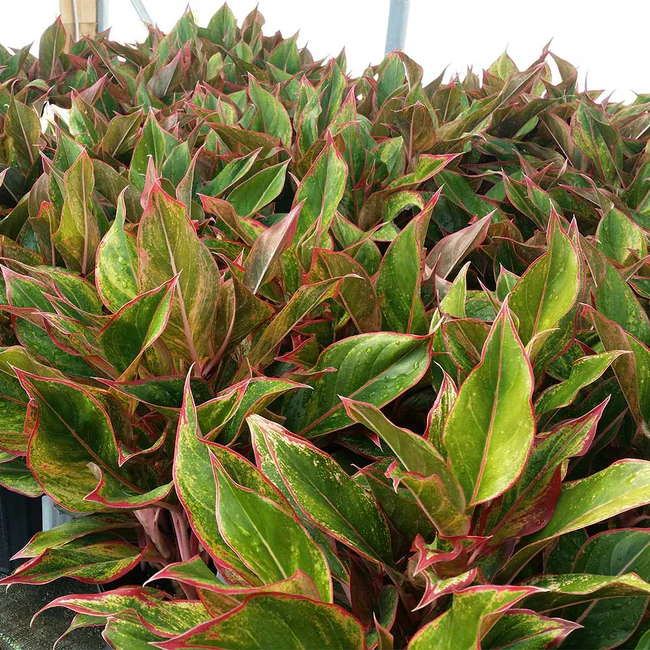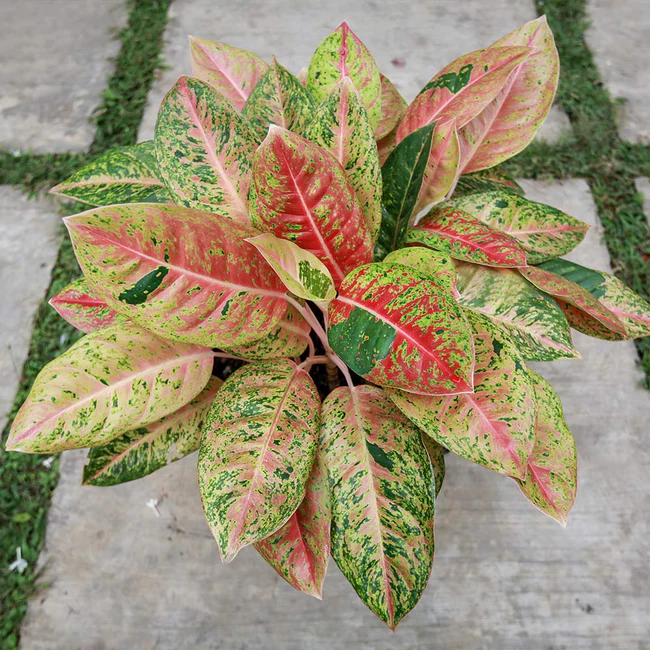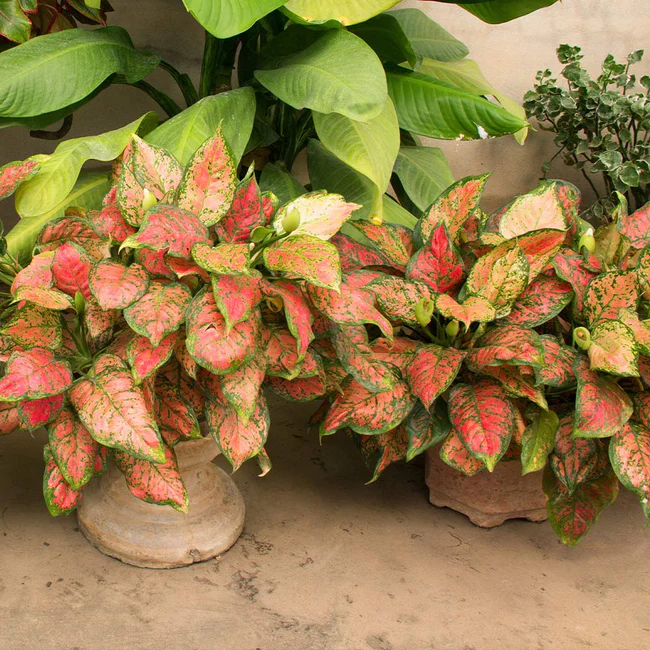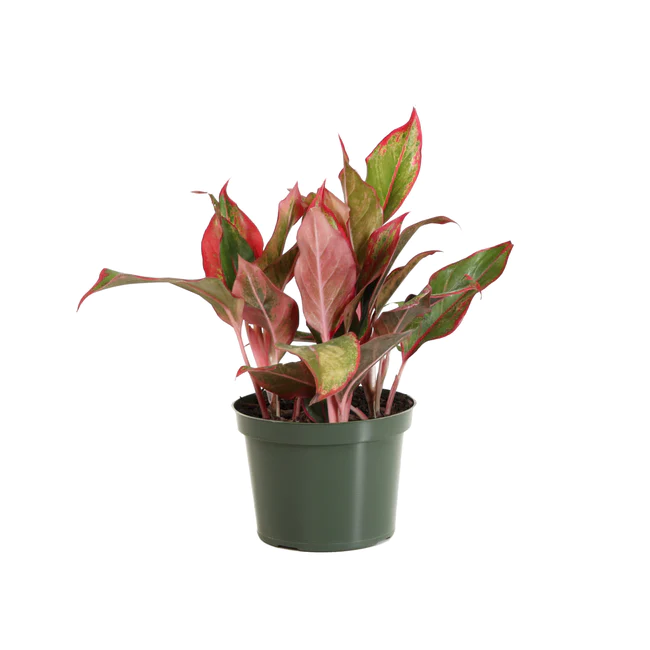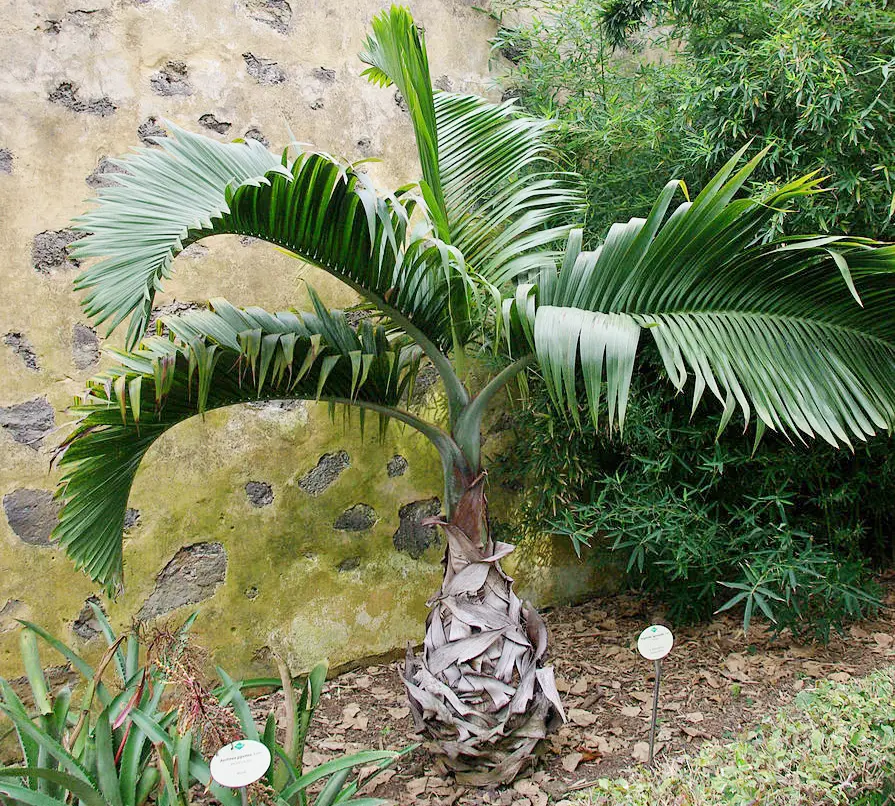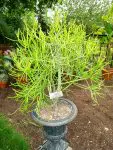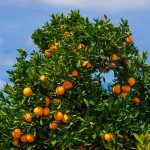This post contains affiliate links. If you buy something from one of our links we may earn a commission. Thanks
The Red Chinese Evergreen or Red Aglaonema is one of the most popular indoor plants known for their vibrant red foliage and low maintenance care requirements.
Caring for Red Chinese Evergreen or Red Aglaonema requires placing the plant in low to medium light, keeping the soil slightly moist, and maintaining a humid environment. Fertilize sparingly and ensure good drainage to prevent waterlogging.
There is also a green Chinese evergreen. Care is the same for both red and green Chinese evergreen plants.
Both of these beautiful plants are native to Southeast Asia and are highly sought after for their ability to bring a pop of color to any room.
However, it’s important to note that proper care is necessary for these plants to thrive and maintain their vibrant hues.
In this blog, we will delve into the key elements of Red Chinese Evergreen care, including light requirements, watering, soil, fertilizing, and much more.
Whether you’re a seasoned plant grower or just starting your indoor gardening journey, this guide will provide you with all the information you need to keep your Red Chinese Evergreen and Red Aglaonema healthy and looking their best.
Buy your Red Chinese Evergreen here
What Is Aglaonema?
Aglaonema plants are known for their ability to bring life and color to any space, and the Red Chinese Evergreen, or Red Aglaonema is one of the most popular indoor plants and known for its vibrant red foliage.
Native to Southeast Asia, these plants are highly sought after for their ease of care and ability to thrive in a variety of conditions. According to Wikipedia:
Aglaonema is a genus of flowering plants in the arum family, Araceae. They are native to tropical and subtropical regions of Asia and New Guinea.They are known commonly as Chinese evergreens.
A brief overview of the Red Chinese Evergreen plant
The Red Chinese Evergreen, also known as Aglaonema, is a tropical plant native to Southeast Asia. It is prized for its beautiful red foliage that adds a pop of color to any room.
The plant is also known for its low-maintenance care requirements, making it an excellent choice for those just starting their indoor gardening journey or those looking for a low-maintenance plant.
Red Chinese Evergreen Meaning
The Red Chinese Evergreen is not just a beautiful addition to any room, it also holds cultural significance in many parts of Southeast Asia.
In Chinese culture, the Red Chinese Evergreen is believed to bring good luck, wealth, and prosperity.
It is often gifted to friends and family during important events such as weddings and Chinese New Year. The plant’s lush green foliage and vibrant red leaves make it a symbol of vitality and growth, making it a popular choice for indoor gardening enthusiasts.
Red Chinese Evergreen Care
Proper care is crucial for the Red Chinese Evergreen to maintain its vibrant red foliage and overall health.
This includes providing the right amount of light, watering, and soil, as well as regular maintenance, such as pruning and fertilizing. Neglecting to care for the plant properly can lead to yellow leaves, stunted growth, and even death.
So let’s get started growing the red Chinese evergreen.
1. Red Chinese Evergreen Light Requirements
Aglaonema plants are low-light plants, but they still require adequate light to maintain their vibrant red foliage and overall health.
In this section, we’ll explore the different types of light and the ideal lighting conditions for the Red Chinese Evergreen and Red Aglaonema.
We’ll also discuss the importance of avoiding direct sunlight, as well as the signs of too little or too much light and how to address them.
Whether you’re a seasoned plant expert or just starting your indoor gardening journey, understanding the light requirements for the Red Aglaonema is essential for their long-term health and well-being.
Ideal light conditions for the Red Chinese Evergreen
The Red Chinese Evergreen prefers bright, indirect light or indirect sunlight and can tolerate low light conditions, making it an excellent choice for rooms with limited natural light.
It is important to avoid direct sunlight, as this can cause the leaves to scorch and fade in color.
If you are not sure if your plant is receiving enough light, you can test it by placing your hand between the plant and the light source. If you can easily see a shadow beneath your hand, it is bright enough for the Red Chinese Evergreen.
Signs of too much or too little light
Signs of too much light include yellowing or scorched leaves, while signs of too little light include pale, yellow leaves, and slow growth.
If your plant is showing signs of too much or too little light, adjust its position accordingly to provide the right amount of light.
Tips for providing the right amount of light
• Place the Red Chinese Evergreen near a bright window with indirect light.
• If you don’t have a bright window, you can supplement the light with artificial light, such as fluorescent lights or LED grow lights.
• Rotate the plant every few weeks to ensure even light distribution and prevent uneven growth.
• Keep the plant away from direct sunlight and hot, sunny windows. You can use sheer curtains to filter the light.
By following these tips, you can provide the Red Chinese Evergreen with the ideal light conditions it needs to thrive.
2. Temperature and Humidity Requirements
The Red Chinese Evergreen is a tropical plant that thrives in warm, humid environments. It’s important to maintain an ideal temperature range to ensure that your plant remains healthy and vibrant.
Ideal temperature range for the Red Aglaonema
Optimal temperatures for the Red Chinese Evergreen range between 60°F and 90°F, with an ideal average temperature of around 75°F.
Avoid keeping your plants in cold drafts and keep them away from heating or air conditioning ducts.
Importance of maintaining proper humidity levels
In addition to temperature, it’s also important to maintain proper humidity levels for the Red Chinese Evergreen.
High humidity levels are especially important during the winter months when the air in your home may be dry.
If you have dry air in your home, you can increase humidity by placing a tray of water near your plant, misting it regularly, or using a humidifier.
Signs of temperature and humidity stress and how to address them
It’s also important to pay close attention to your Red Chinese Evergreen for signs of temperature and humidity stress, such as yellowing leaves, wilting, or leaf drop.
If you notice any of these symptoms, it’s important to take action to address the problem as soon as possible to help your plant recover.
3. Red Chinese Evergreen Watering
Watering is one of the most important aspects of caring for the Red Chinese Evergreen and Red Aglaonema.
Proper watering is essential for the plant’s health, growth, and longevity. In this section, we’ll cover the best watering practices for Red Aglaonema, including how often to water, what type of water to use, and the signs of over or underwatering.
Understanding the watering requirements for the Red Chinese Evergreen is essential for their long-term health and well-being.
Frequency of watering
Red Aglaonema should be watered when the top inch of soil is dry to the touch. They like moist soil but be careful not to overdo it.
On average, this is about once a week, but the frequency may vary depending on factors such as humidity, temperature, and the size of the pot.
Be careful of giving too much water too frequently, as over-watering can lead to root rot.
How to properly water the Red Chinese Evergreen
When watering the Red Chinese Evergreen it’s important to use lukewarm water and avoid getting the leaves wet.
This will prevent leaf spot and other diseases. The best way to water the plant is to pour water directly onto the soil and let it drain freely through the bottom of the pot. Don’t let runoff sit in the tray which can cause root rot so empty the saucer.
Signs of over-watering and under-watering
Signs of over-watering include yellowing leaves, a mushy or soggy potting mix, and a bad odor.
On the other hand, signs of under-watering include browning or wilting leaves, a dry potting mix, and slow growth.
If you notice any of these signs, adjust your watering schedule accordingly to provide the right amount of water.
Tap Water
Tap water that contains chloramines or fluorides may build up in the soil and cause problems. If possible use distilled or RO water for your plants.
Following these tips to ensure that your Red Chinese Evergreen receives the right amount of water.
4. Red Chinese Evergreen Soil Requirements
The soil mix used for the Red Chinese Evergreen and Red Aglaonema is just as important as the light and water they receive.
In this section, we’ll discuss the ideal soil type and composition, as well as the importance of proper soil drainage.
When planting your Red Aglaonema in a container, understanding the soil requirements will help ensure the plant’s healthy growth and longevity.
By providing the right soil mix, you can ensure that your plants have the proper foundation they need to thrive.
Ideal soil type for the Red Chinese Evergreen
The Red Chinese Evergreen prefers a well-draining, slightly acidic potting mix that is rich in organic matter.
A good quality peat-based potting mix or a mix of peat moss, perlite, and vermiculite works well. A 50/50 mix of perlite and coco coir also works well.
You can mix in compost or worm castings to improve soil fertility.
Avoid using heavy, potting soils as they retain too much moisture and can lead to root rot.
How to properly prepare the soil
When potting the Red Chinese Evergreen, it’s important to make sure the soil is evenly moist but not soaking wet.
Fill the pot with the potting mix, tapping it gently to settle it. Then, water the soil thoroughly to help settle it around the roots.
Importance of good soil drainage
Good soil drainage is essential for the health of the Red Aglaonema.
Poor drainage can lead to root rot, so it’s important to make sure the soil mix is well-draining and the pot has drainage holes to allow excess water to escape.
Before planting in a container, it’s a good idea to add a layer of gravel or perlite at the bottom to promote proper drainage.
By providing the right soil type and ensuring good soil drainage, you can give your Red Chinese Evergreen the best foundation for healthy growth.
Repotting: When and how often to repot
.Red Chinese Evergreen plants are typically slow growers and only need to be repotted once every 2-3 years, or when the plant has outgrown its current pot.
When repotting, it’s important to choose a pot that’s slightly larger than the previous one and to use a fresh well-draining potting mix that’s formulated for tropical plants.
How to properly repot the plant
To properly repot the Red Chinese Evergreen first remove the plant from its current pot and gently loosen any tangled roots.
You can gently trim off any dead or damaged roots.
Then, place the plant in the new pot and fill it in with fresh soil, making sure to gently press down to eliminate any air pockets.
Water thoroughly after repotting and allow the plant to drain for a few minutes before placing it back in its normal location.
Slow-growing nature of the Red Chinese Evergreen
It’s important to note that the Red Chinese Evergreen is a slow-growing plant and will not require frequent repotting.
5. Fertilizing Red Aglaonema
Fertilizing is an important part of caring for the Red Chinese Evergreen or Red Aglaonema, as it provides the plant with the necessary nutrients it needs to grow strong and healthy.
But too much fertilizer is just as bad as not enough. In this section, we’ll discuss the best type of fertilizer to use, how often to fertilize, and how to apply it properly.
With a little extra attention to fertilizing, you can ensure that your Red Chinese Evergreen and Red Aglaonema receive the proper nutrients they need to thrive.
Recommended fertilizer types and schedule
The Red Chinese Evergreen prefers a balanced, water-soluble fertilizer with equal amounts of nitrogen, phosphorus, and potassium.
It’s best to apply fertilizer every 4-6 weeks during the growing season (spring to fall). In winter, when the plants are dormant, reduce fertilizing to once a month.
How to properly apply fertilizer
When applying fertilizer, be sure to follow the instructions on the label carefully. Mix the fertilizer into the water according to the recommended ratio, then water the plants with the mixture.
Be sure to avoid getting the fertilizer on the leaves, as it can cause them to burn.
As an easy alternative, you can use slow-release fertilizer spikes.
Signs of over-fertilizing
Over-fertilizing can lead to stunted growth and yellowing of the leaves. It can cause plants to wilt and burn.
If you notice these symptoms, stop fertilizing immediately and flush the pot out with water. Use at least 2-3 times the pot size.
So a 2-gallon pot would be flushed with 4-6 gallons of water. Water the plant only with plain water until it recovers.
Once the plant has recovered, resume fertilizing at a reduced frequency and with a lower concentration of fertilizer.
By providing the right type of fertilizer at the right frequency and applying it properly, you can help ensure that your Red Aglaonema receives the nutrients it needs to grow strong and healthy.
6. Pruning and Maintenance
Pruning and maintenance are important parts of caring for the Red Chinese Evergreen.
Regular pruning can help the plant maintain its shape and promote healthy growth, while proper maintenance can help prevent problems such as pest infestations and diseases.
In this section, we’ll cover the basics of pruning, as well as other important maintenance tasks such as cleaning the leaves and monitoring for pests.
By following these tips, you can help ensure that your Red Chinese Evergreen and Red Aglaonema stay healthy and beautiful for years to come.
How to properly prune the Red Chinese Evergreen
To prune the Red Chinese Evergreen, use a clean, sharp pair of shears to cut back any overcrowded stems.
Cut back any that are too long or out of place and remove any dying or discolored leaves. Don’t remove too much all at once.
Make cuts just above a node (where a leaf attaches to the stem) so that new growth can sprout from the node.
Pruning can be done at any time of year but is most commonly done in spring or early summer.
Importance of regular maintenance
In addition to pruning, regular maintenance tasks such as cleaning the leaves and monitoring for pests are important for keeping your Red Aglaonema healthy.
To clean the leaves, use a soft, damp cloth to gently wipe away any dust or dirt. To monitor for pests, inspect the leaves and stems regularly for any signs of infestation, such as holes or discoloration.
Common pests and diseases and how to treat them
Common pests that affect the Red Chinese Evergreen include spider mites and mealybugs.
To treat pest infestations, you can use a pesticide specifically designed for indoor plants. If you prefer a more natural approach, you can use insecticidal soap or neem oil.
To prevent diseases, make sure the plant is getting proper care, including adequate light, water, and soil.
If you do notice signs of disease, such as yellowing or wilting, remove the affected parts of the plant immediately and take steps to improve the overall care of the plant.
The first thing to check is the roots as overwatering is most common cause.
Look for dead or mushy roots or a foul smell. You may be able to save the plant by removing them and replanting them in fresh soil.
By following these tips for pruning and maintenance, you can help ensure that your Red Chinese Evergreen stays healthy and beautiful for years to come.
7. Red Chinese Evergreen Propagation
Propagating the Red Chinese Evergreen and Red Aglaonema can be a fun and rewarding experience.
Whether you want to create new plants for yourself or for friends and family, the process is relatively simple and can be done using stem cuttings or division.
In this section, we’ll cover the steps involved in propagating the Red Chinese Evergreen and Red Aglaonema, as well as tips for ensuring success.
With a little bit of time and effort, you can enjoy the beauty of these plants in many new locations.
Methods for propagating the Red Chinese Evergreen
There are two main methods for propagating the Red Chinese Evergreen and Red Aglaonema: stem cuttings and division.
Stem Cuttings: To propagate the plant using stem cuttings, simply take a cutting from a healthy parent plant and plant it in a well-draining soil mixture.
Take a cutting with healthy leave and about 3 inches of stem attached. Place it in a pot of moist soil.
Water the cutting and place it in a location with bright, indirect light. With proper care, the cutting should root and develop into a new plant.
Division: To propagate the plant through division, carefully remove the parent plant from its pot and separate the roots into smaller sections with a sharp knife.
Replant each section into its own pot and water them well.
Tips for successful propagation
Regardless of the method you choose, there are a few tips that can help ensure the successful propagation of the Red Chinese Evergreen and Red Aglaonema.
• Use a well-draining soil mixture. Coco coir works really well.
• Place the cuttings or divided sections in a location with bright, indirect light
• Water regularly, but not too frequently
• Keep the air humidity high to promote rooting
• Be patient, as it may take several weeks for a cutting to fully root and develop into a new plant but divisions will start growing much sooner.
By following these tips, you can help ensure that your Red Chinese Evergreen propagation efforts are successful, resulting in healthy and thriving new plants.
8. Red Chinese Evergreen Yellow Leaves
The Red Chinese Evergreen is prized for its vibrant leaves and elegant appearance, but sometimes, yellow leaves can be a sign of trouble.
If your plant’s leaves are turning yellow, it could indicate a problem with its care or environment.
In this section, we’ll explore some common causes of yellow leaves in the Red Chinese Evergreen and what you can do to prevent or treat them.
Whether you’re a seasoned plant grower or a beginner, this information will help you keep your Red Chinese Evergreen looking its best.
Causes of yellow leaves in the Red Chinese Evergreen
There are several common causes of yellow leaves in the Red Chinese Evergreen, including:
• Over-watering: If the soil stays too wet for too long, it can lead to root rot, which can cause the leaves to turn yellow and fall off.
• Under-watering: If the soil is too dry for too long, it can cause the leaves to turn yellow and wilt.
• Poor lighting: If the plant is not receiving enough light, it can cause the leaves to yellow and drop.
• Nutrient deficiencies: If the plant is not getting enough of the nutrients it needs, it can cause the leaves to yellow.
• Pests or diseases: Certain pests and diseases can cause the leaves to yellow, so it’s important to be vigilant and treat any issues promptly.
How to diagnose and treat yellow leaves
To diagnose and treat yellow leaves in the Red Chinese Evergreen, you should:
• Check the soil moisture level: If the soil is too wet or too dry, adjust your watering schedule accordingly.
• Monitor lighting: Make sure the plant is receiving the right amount of light for its needs.
• Apply fertilizer: If the plant appears to be suffering from a nutrient deficiency, consider applying a balanced fertilizer.
• Check for pests or diseases: If you suspect pests or diseases, treat the plant promptly to prevent further damage.
By taking these steps, you can help prevent yellow leaves and keep your Red Chinese Evergreen looking its best. With proper care and attention, this beautiful plant can thrive and bring joy to your home for many years to come.
Red Chinese Evergreen FAQs
Exploring the realm of nurturing a Red Aglaonema can lead to a multitude of questions.
Below are some frequently asked questions to assist in understanding the care essentials for this vibrant plant.
Q. What soil type is ideal for Red Aglaonema?
A. A well-draining, slightly acidic soil is ideal for Red Aglaonema. You may use a peat-based potting mix with added perlite or sand to improve drainage.
Q. How often should I water Red Aglaonema?
A. Watering frequency depends on the humidity and temperature of your environment. Typically, allow the top layer of soil to dry before watering. Over-watering can lead to root rot.
Q. Does Red Aglaonema require fertilization?
A. Yes, it benefits from a balanced liquid fertilizer applied every 4-6 weeks during the growing season. Ensure to follow the instructions on the fertilizer packaging.
Q. Is Red Aglaonema pet-friendly?
A. No, it’s not pet-friendly. The plant is toxic to cats and dogs if ingested, causing oral irritation, intense burning, and irritation of the mouth, lips, tongue, and throat in pets.
Red Chinese Evergreen Care Tips Final Thoughts
In conclusion, the Red Chinese Evergreen is a stunning and low-maintenance plant that can add beauty and tranquility to any space.
With the right care, this plant can thrive and bring joy to your home for years to come.
From light requirements to soil preparation, from watering to fertilizing, and from pruning to propagation, there are many things you can do to help your Red Chinese Evergreen flourish.
And with its deep red leaves and timeless beauty, it’s no wonder that the Red Chinese Evergreen has become a popular choice for indoor gardening.
Whether you’re a seasoned gardener or just starting out, caring for the Red Chinese Evergreen is a great way to bring a touch of nature into your home.
Recap
In this blog post, we’ve covered the key points for Red Chinese Evergreen care, from light requirements to soil preparation, from watering to fertilizing, and from pruning to propagation.
We’ve also discussed the common causes of yellow leaves and how to diagnose and treat them.
To recap, the Red Chinese Evergreen thrives in bright, indirect light, and it’s important to water it properly and keep the soil well-drained.
Regular fertilization, pruning, and maintenance can also help keep this plant healthy and beautiful.
As a final thought, the success of your Red Chinese Evergreen largely depends on paying close attention to its care needs and adapting your care routine as needed.
With patience, persistence, and a bit of knowledge, you’ll be well on your way to growing a thriving Red Chinese Evergreen in no time.
You can buy your own Red Chinese Evergreen here
Read about the 20 Benefits Of Keeping Indoor Plants For Improved Lifestyle

